How to Cure a Molcajete
Do you know the secret to flavorful and authentic Mexican salsas? A molcajete. Check out my tips and how to cure a molcajete and also the do’s and don’ts to help your Mexican mortar and pestle lasts for years.
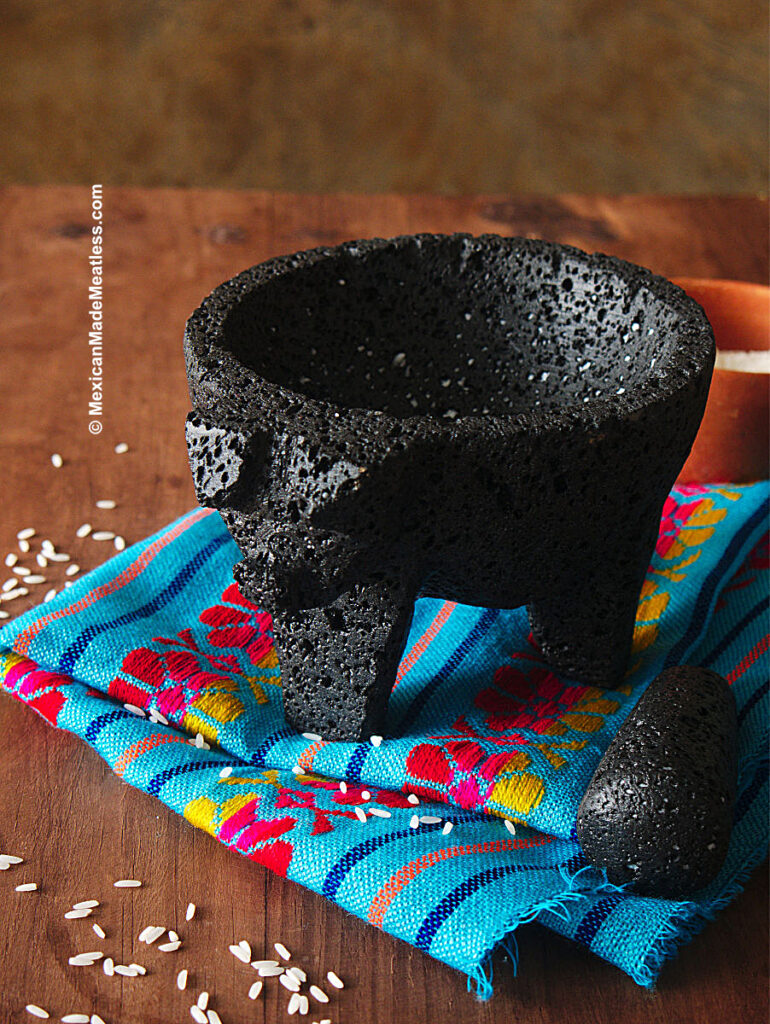
What is a Molcajete
Molcajete is what we in Mexico call a mortar and pestle — actually the pestle is called a tejolote.
Back before everyone in Mexico had blenders (or even before they were invented), cooks used their molcajete to make their daily salsas. These heavy lava rock bowls were, and still are, indispensable in salsa making. This kitchen tool has been an important one in the history of Mexico and its culinary culture.
Salsa made in a molcajete is another level of deliciousness compared to one made in a blender or food processor. The molcajete and tejolote will give your Mexican dishes that authentic and rustic flavor that can typically only be found in the most traditional kitchens.
A molcajete truly is a must in your kitchen.
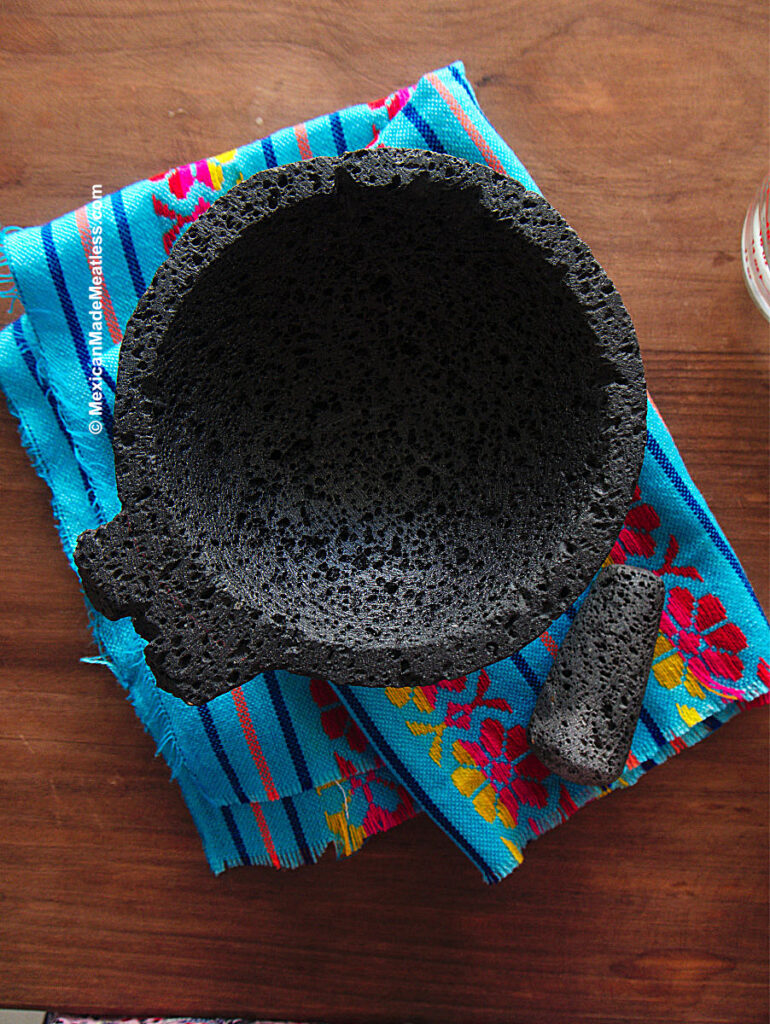
What’s is it Made From
The traditional Mexican mortar and pestle is made from basalt, or volcanic stone.
Do be careful though because nowadays there are some that are actually made of cement and you want to stay away from those. Look for the ones that have the small holes on the surface, like the ones pictured here.
Types of Molcajetes or Mexican Mortar & Pestle
As mentioned above, the ideal traditional molcajete is made of volcanic stone. But if you can’t get your hands on those then one made of granite is an acceptable alternative.
The marble or smooth material ones will work at grinding up the salsas, but all that rustic and traditional flavor will come from a volcanic one.

Protect Your Countertops
Something I should point out is that you’ll want to protect your countertops and table when using these types of molcajetes. Their rough texture can scratch surfaces. I have a kitchen towel that I place the molcajete on top of to prevent damaged surfaces.
Why You Need to Season or Cure a New Volcanic Stone Molcajete
When you purchase an unseasoned mortar and pestle it will feel rough and dust and tiny rock particles will come off it when you move your hand across the surface. These molcajetes aren’t cured or seasoned — the only exception to this are smooth granite or other smooth molcajetes.
Since this type of mortar is made from basalt stone, it is very porous and inside the small holes is where dirt and debris gets trapped. We want to properly cure or season the molcajete so that we don’t end up with this mess in our salsa or in our mouths!
How to Cure a Brand New Molcajete
So before you can start using it you have a little work to do in preparing it. It’s not difficult work but you will have to put some muscle work into it. Make sure you read any information that comes with your molcajete — but do ignore anything that tells you to use soap. More on that later.
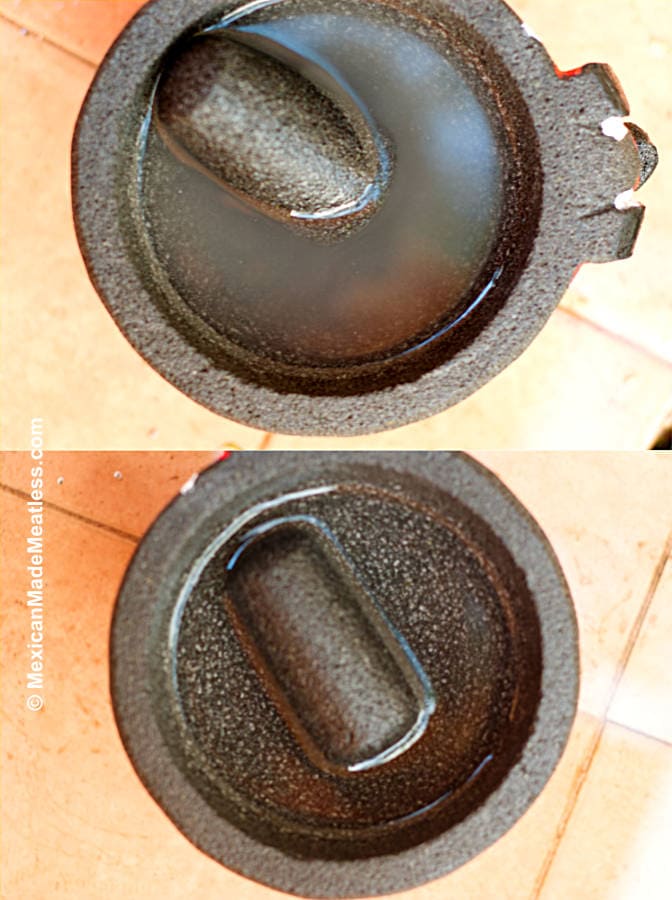
Rinse and Repeat
You first need to rinse it with only water. All that needs to be done is to put it in your sink under running water and with a natural fiber brush or a dish washing brush, scrub it around the entire surface. Do so for the pestle too. Rinse for a few minutes until the water comes out clear like in the picture.
Another method is that you can fill up your sink with water and submerge it, swapping out the water several times. You could also leave it soaking overnight, if desired.
If you have access to a garden house all you do is spray it for about five minutes (keep a good distance to avoid injury.) Repeat this until you see a substantial reduction in the debris — but do remember, that this is only the first step so it will not get rid of all of it.
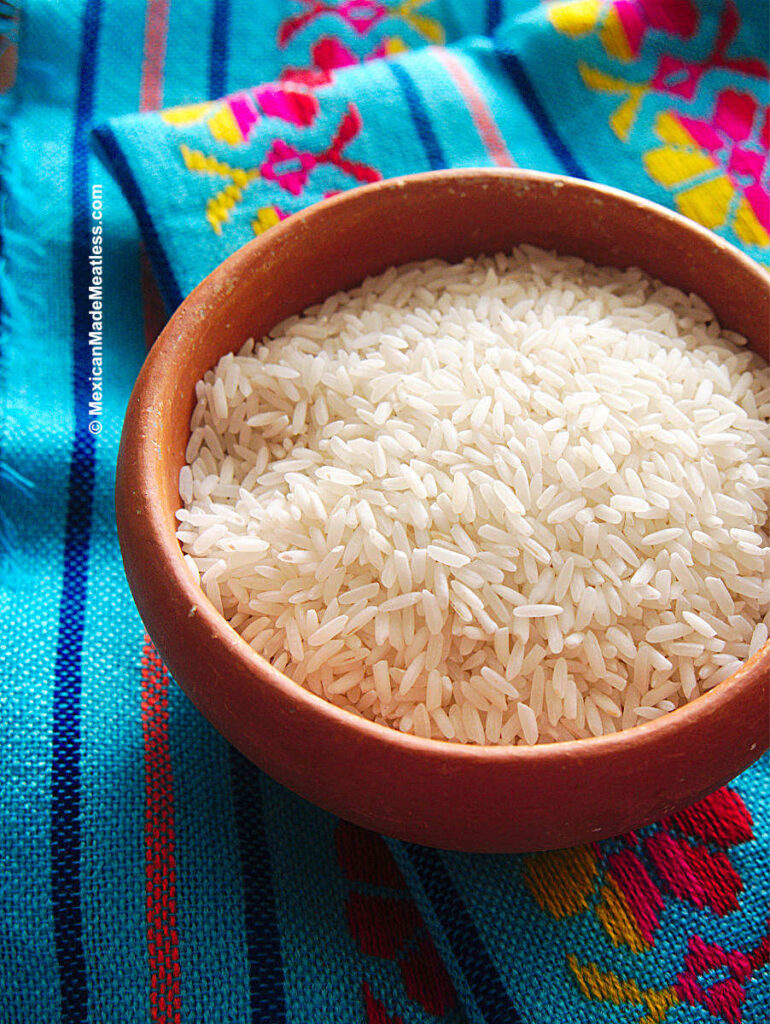
How to Cure a Molcajete with Rice
To cure using rice you need some inexpensive white rice, don’t waste your good rice on this. You’ll also need some water. Not everyone uses water, but I like to and it’s up to you if you want to or not.
Place your molcajete on top of a kitchen towel before you begin.
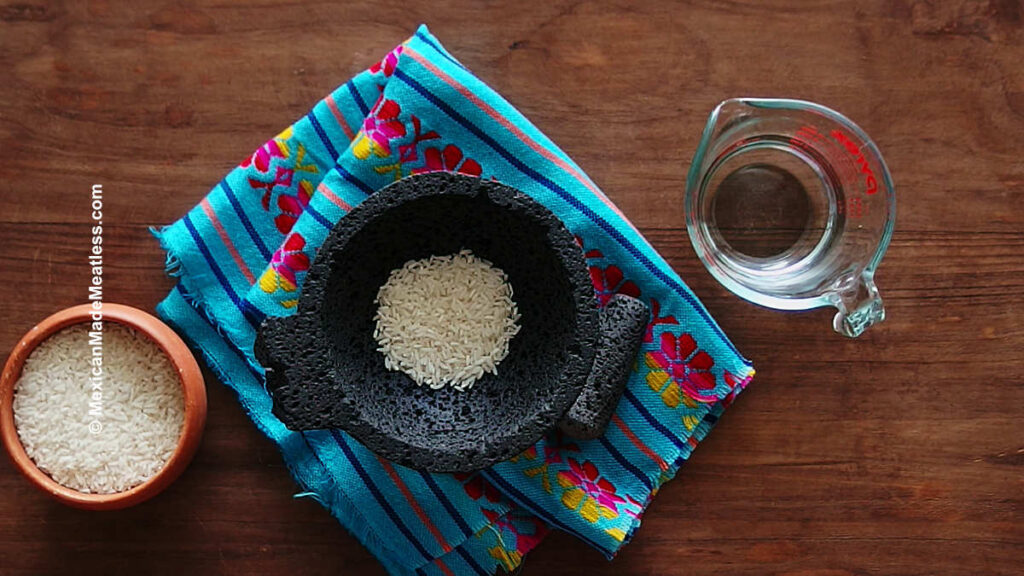
Grab a small handful of rice and place it in the mortar. Only use enough to make an even layer across the bottom. Using too much will have rice flying all over the place. Pour in just a a splash of water over the rice.
Grind The Rice
Begin grinding the rice and making sure to grind it on all of the inside of the molcajete.
Firmly grab the pestle in one hand, and support the mortar with your other hand. Using a circular motion begin grinding the rice all the way around the mortar.
Work the rice up and around the entire, inner, surface of the mortar. Really get in there and use your arm muscles to help you work the rice into the porous surface.
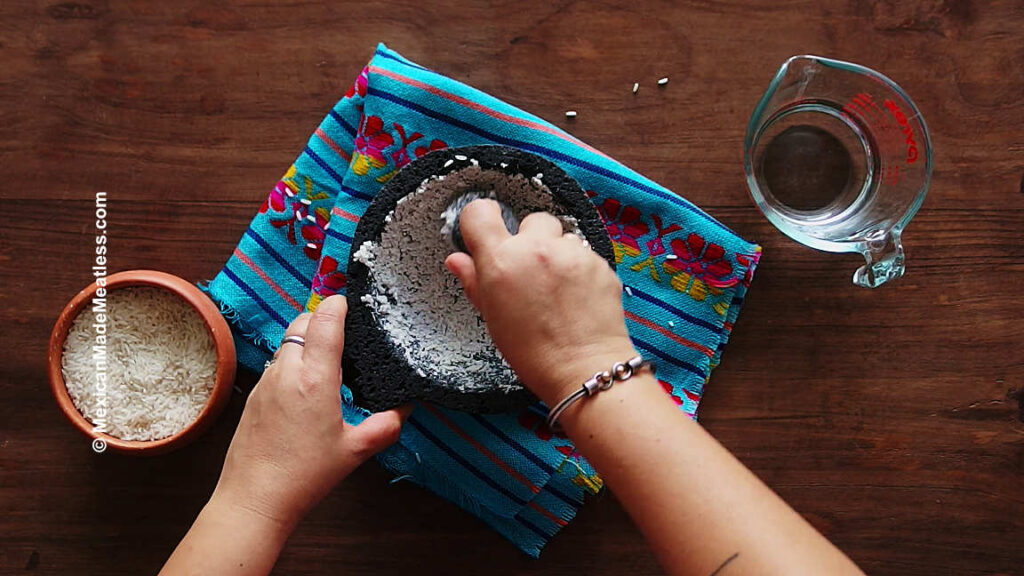
Continue until all of the rice has broken down into a thick paste and the entire inside of the molcajete is covered in it. If you didn’t use water then it’ll just become a fine powder. It’s going to take some arm muscle but keep going.
You’ll notice that the rice will get a greyish color to it. This is exactly what you want because it means that all the dirt, debris and small bits of the loose volcanic stone are being pulled out by the grinding.
The pestle will also be covered in the grey paste. Make sure you twists and turn it and even flip it over, as you grind the rice — we don’t want to leave anything trapped in there.
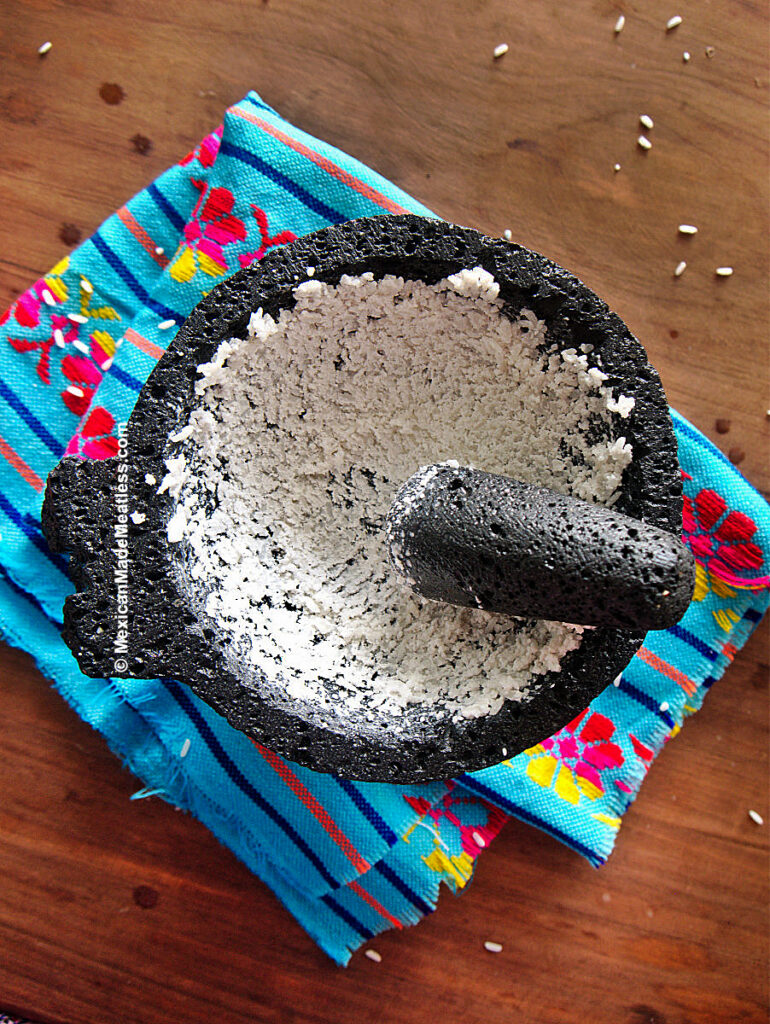
Rinse Off Ground Up Rice Paste
Next you’ll want to discard all of the greyish rice paste and give the molcajete a very good rinse. Make sure you remove all of the rice. You can use the brush again to help you get out as much of the rice as possible.
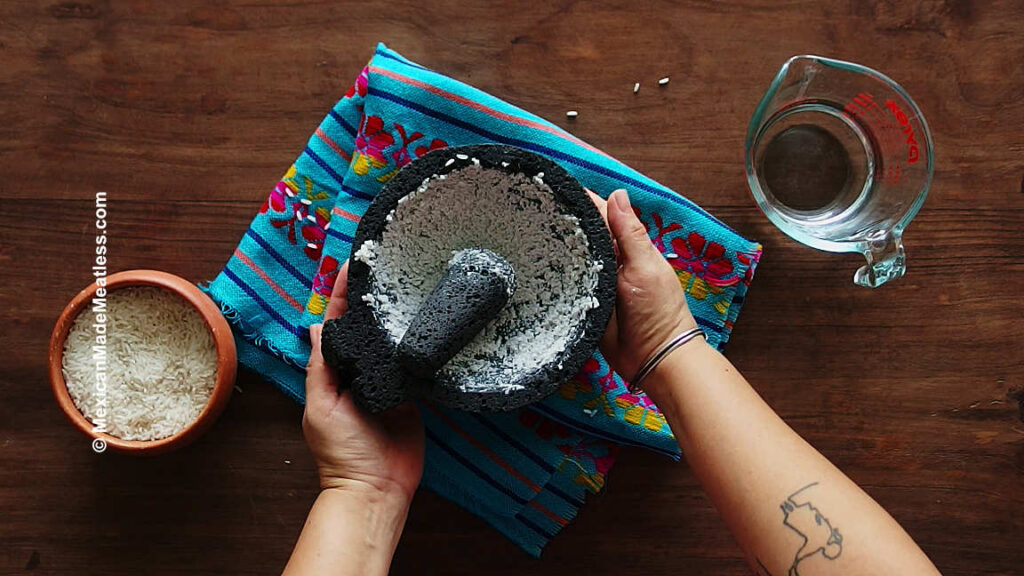
Repeat These Steps
After the first grind and rinsing then you’ll want to repeat the same steps. The amount of times you’ll need to repeat will depend on how much dirt and debris is trapped in the molcajete. The ones I’ve purchased usually 3 times is enough, yours may be less or more also it’ll depend on the size of your molcajete.
You’ll know the molcajete is ready once the rice no longer has small specks of dirt or debris on it. Make sure you’re checking that! Also the color of the rice will stay white.
Rinse thoroughly before moving on to the next step.
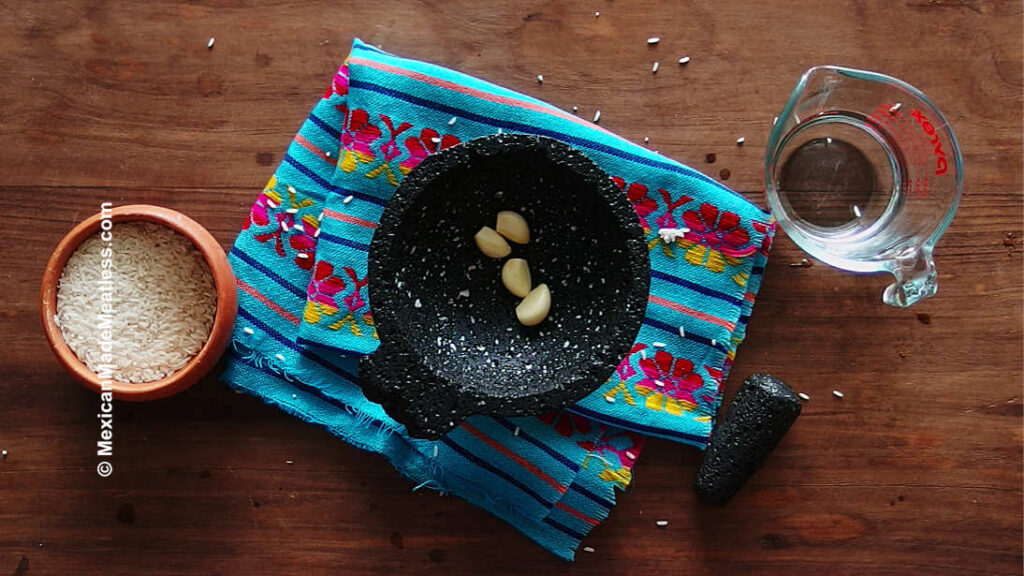
How to Season a Molcajete with Garlic
The next step after grinding the rice into the molcajete is to use garlic.
You want to take several whole raw cloves of garlic and a small handful of rock salt and place them inside the molcajete.
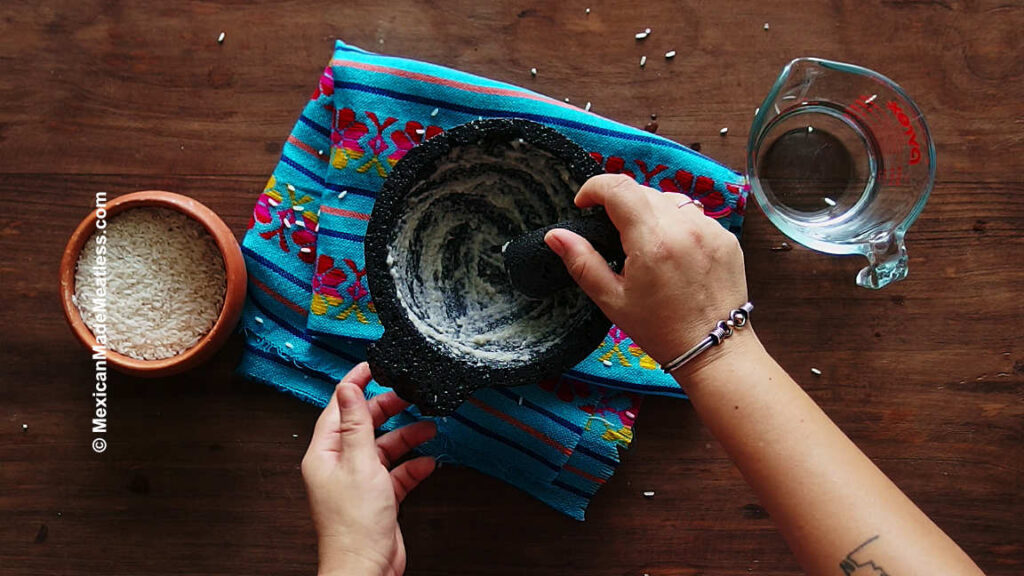
Grind the garlic and salt until you get a creamy paste. Make sure just like with the rice, that you go all the way up the sides of the molcajete. Once finished then you can again rinse it off in the kitchen sink with a kitchen brush.
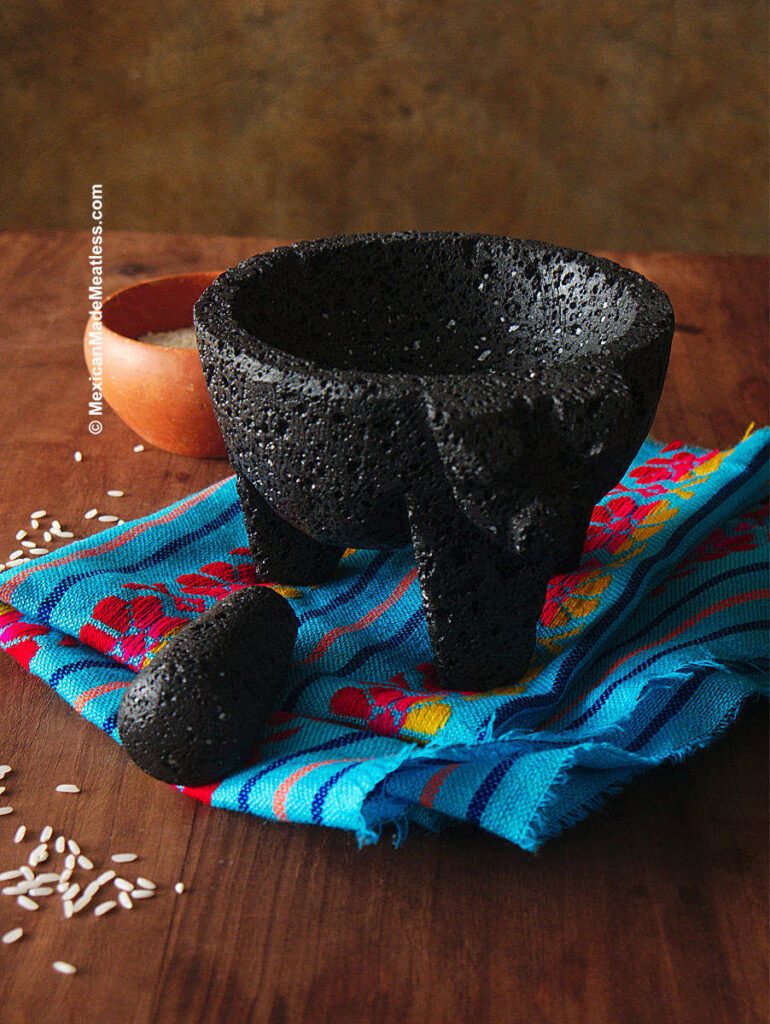
Ready to Use Your Molcajete!
After all the rice grinding and the garlic paste grinding and all the rinsing then the molcajete is finally cured!
You want to let it air dry and then use it to make your first salsa or grinding up spices or anything you want.
Don’t Use Soap on Your Molcajete!
Did you know that you mustn’t ever use soap when cleaning a stone mortar and pestle? It will make any foods or spices prepare in it taste like soap — yuck!
Just like you’d never use soap on a cast iron skillet, or scrub a nonstick pan with a wire dish pad, you just never ever use soap on a molcajete! It’s that simple.
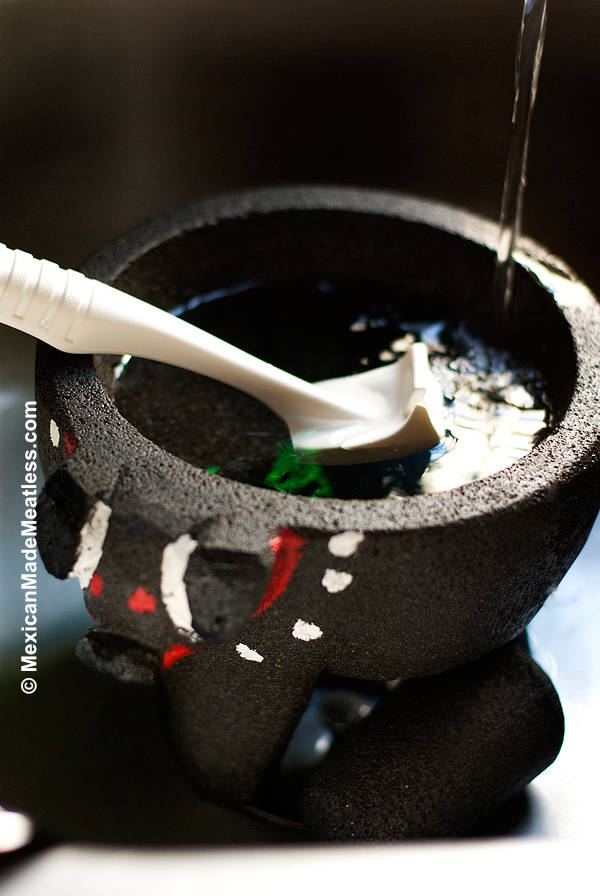
How to Clean a Molcajete
Properly cleaning your molcajete is incredibly easy. Check out all of the tips below.
• Warm Water: Thoroughly rinse your molcajete and tejolote with plenty of warm water. Repeat this a couple of times until there is no more food on it.
• Use a Kitchen Brush: You want a firm, clean, kitchen brush for your molcajete. There’s a picture of the kind I use below on the Amazon links, but a plastic one works well too. I highly suggest having a brush specific to your molcajete, this way you ensure that no soap will “contaminate” it.
• Never, Ever, Use Soap: The reason is that since it is porous those little holes will trap the scent and taste of soap. You really don’t want that scent and taste leaking into your spices, salsas or anything you grind.
• Air Dry: It is very important that your mortar and pestle be completely dry before putting it away. If you don’t scrap away, properly rinse off, and thoroughly dry the molcajete, it can possibly grow mold. After properly cleaning it, use a towel to blot excess water off the surface. Flip it upside down, then right side up, and repeat if needed to ensure even air drying.
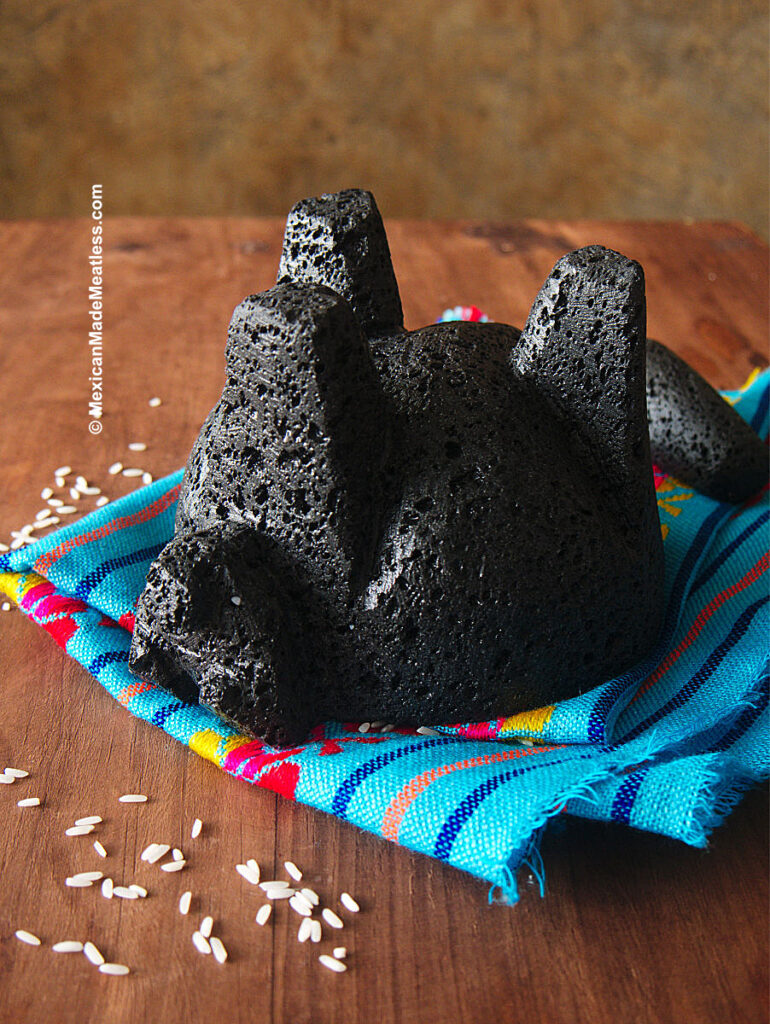
What To Do About a Stinky Mortar and Pestle:
One great thing about using a volcanic rock mortar is that over time, just like a cast iron skillet, certain flavours are absorbed into it. This can lend a nice taste to what ever it is that you are grinding.
But there are times when those trapped scents and flavors are unwanted or get to be too much.
You can fix this by going through the same process of curing it with the rice. But don’t worry because this time we don’t have to worry about all the dirt and debris. In fact you only need to grind the rice and water into it once or twice. This should get rid of all the strong scents.
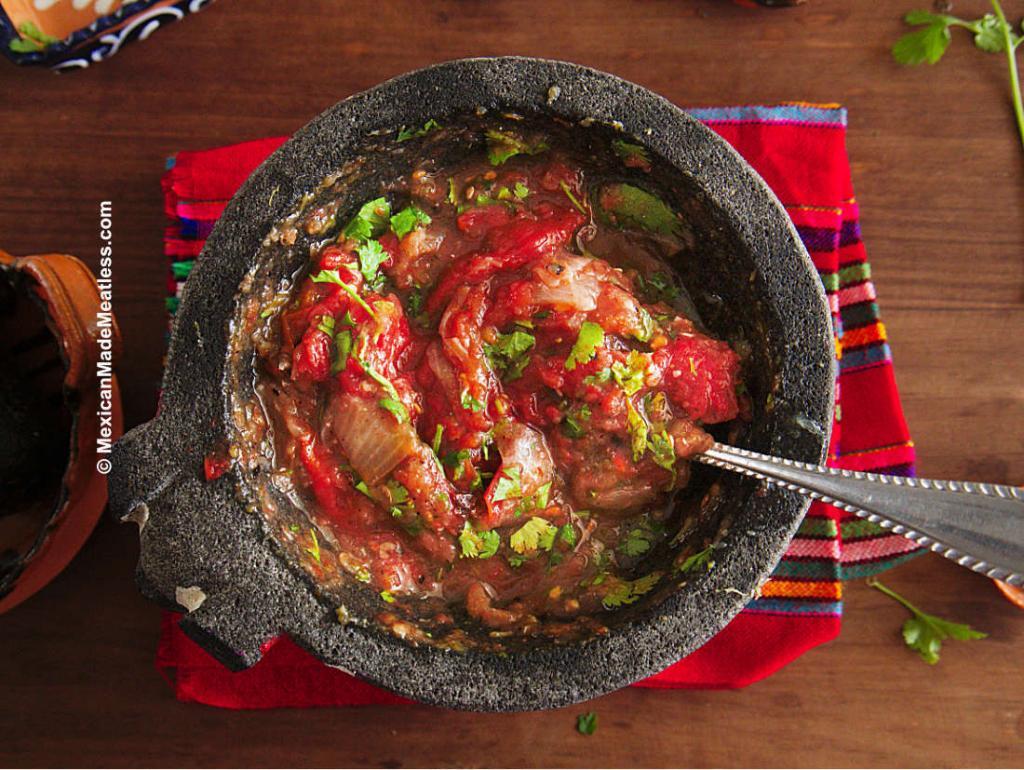
How to Use a Mexican Molcajete
A molcajete is not only for making salsas or guacamole, it can be used in preparing so many international foods.
We can use it to grind up spices for curries and homemade spice mixtures, mash ginger and garlic, and grind chilies for sauce, salsas, and marinades. It’s a great kitchen gadget.
How to Store it
To store a molcajete make sure it’s fully dry and clean to prevent any mold growth or trapped humidity.
Store right on your kitchen counter or in a cabinet until ready to use.
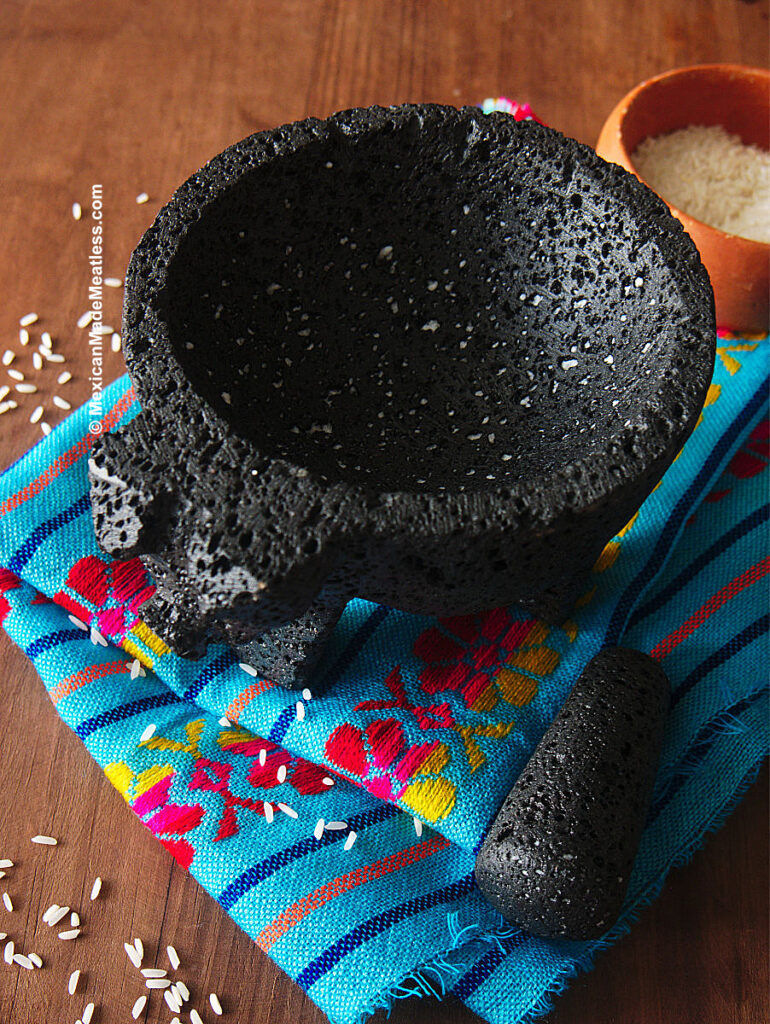
Make These Salsas in a Molcajete
- Molcajete Salsa | Salsa Molcajeteada
- Tomato & Arbol Chile Salsa | Salsa de Jitomate y Chiles de Arbol
- The EASIEST Salsa Verde
- Quick and Easy Fresh Tomato Salsa
- Spicy Fire Roasted Habanero Peppers Salsa
Nancy Lopez is a food blogger and author of the cookbook Mexican Tamales Made Meatless. Born in Mexico, raised in the US, and currently living in Southern Mexico, she has followed a meatless diet for almost 10 years. It is her passion and mission to share all she has learned about vegan Mexican cooking and vegetarian Mexican recipes. Mexican Made Meatless is a blog dedicated to preserving the authentic flavors of Mexican cuisine just without the meat. It’s a place to celebrate Mexican culture and all it’s delightfully delicious traditional foods. Read more…

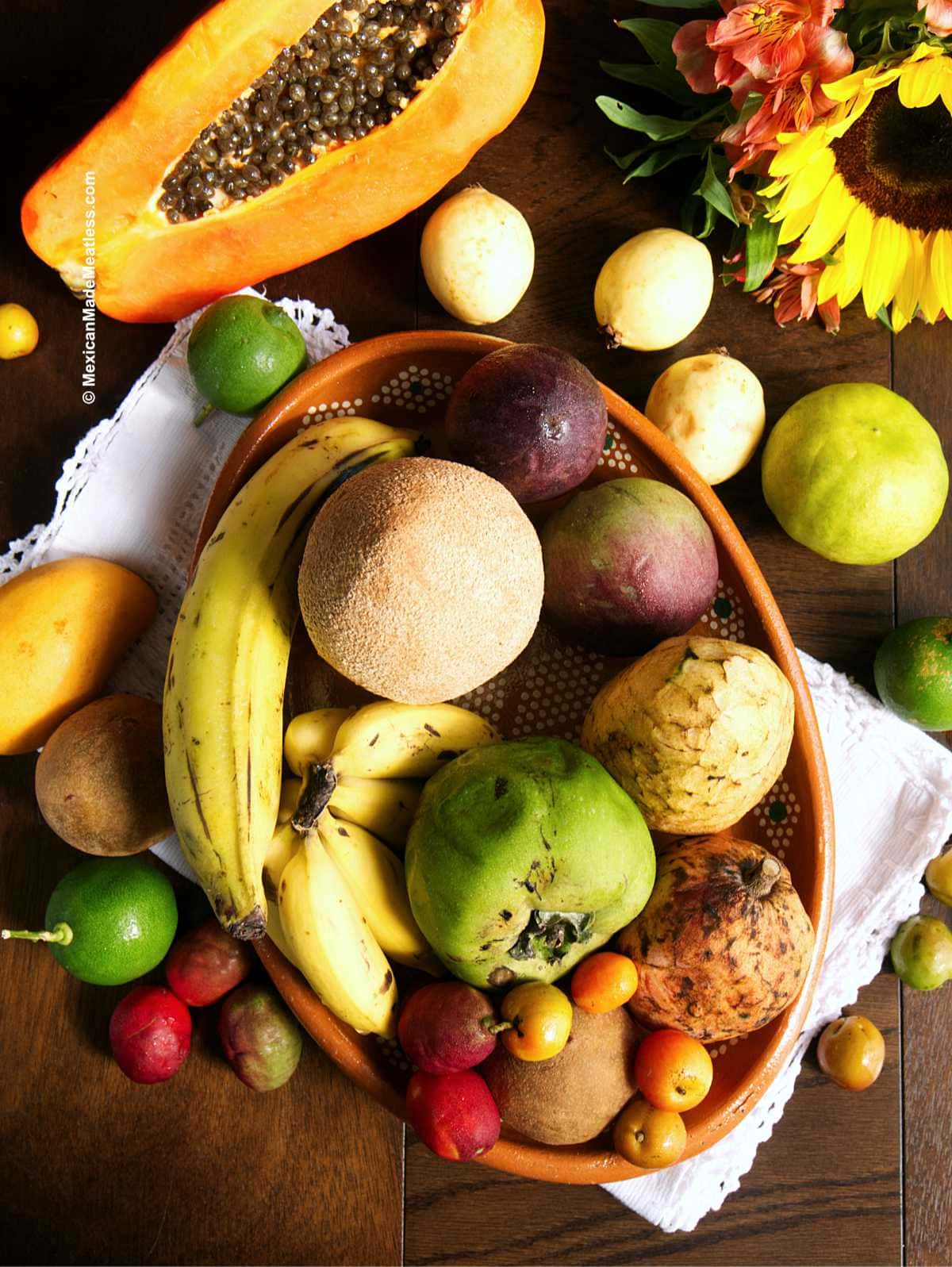
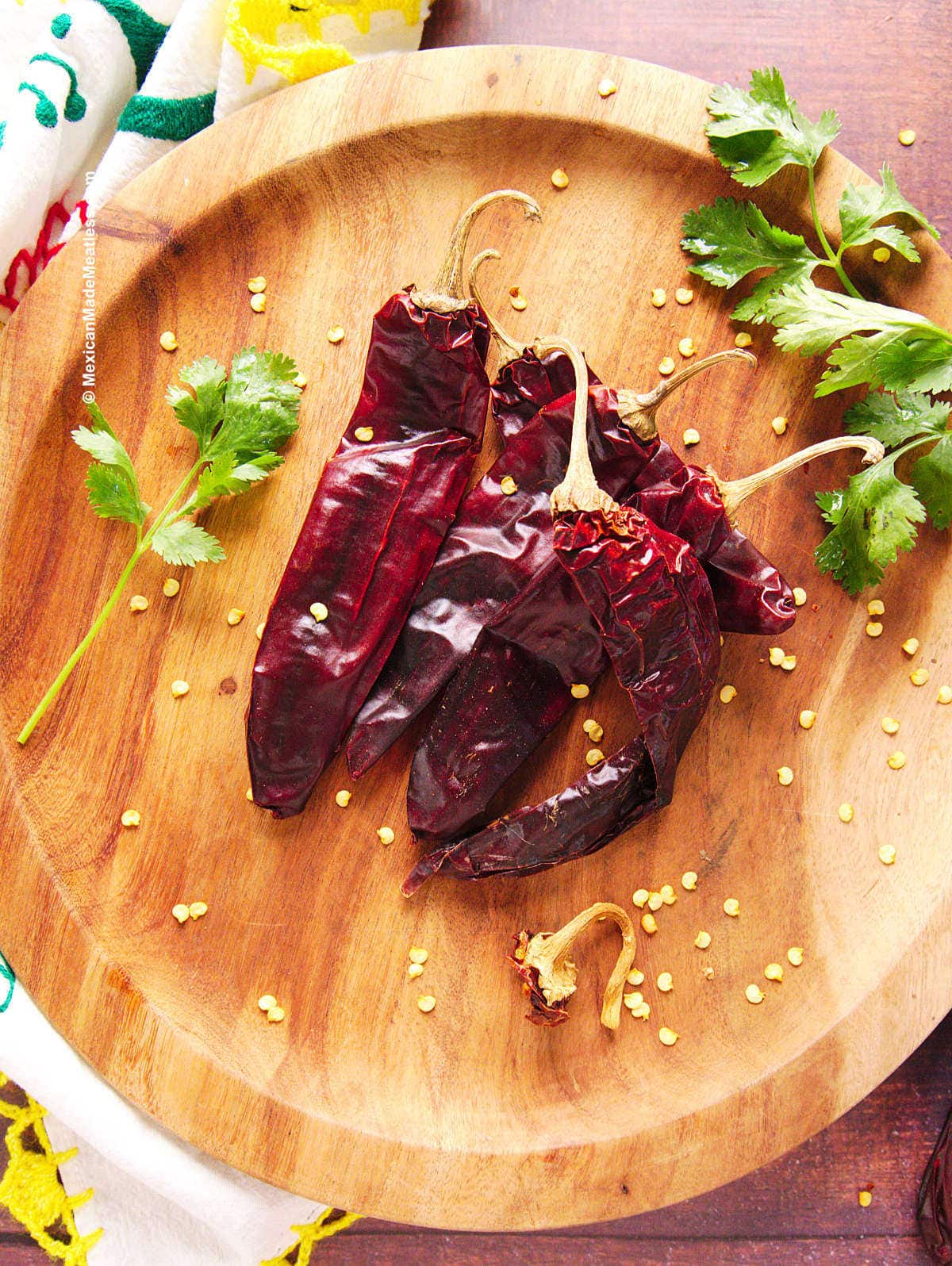
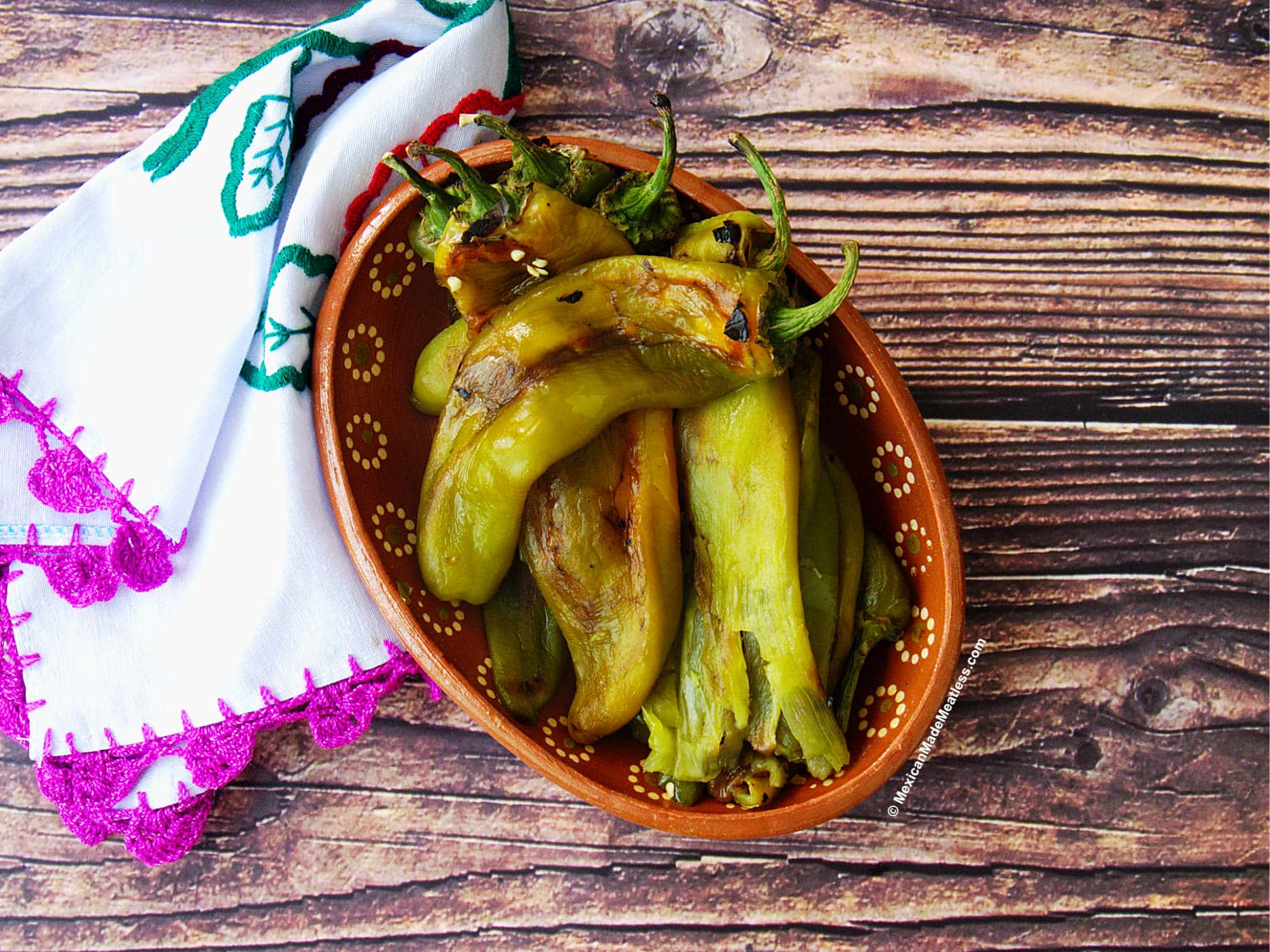
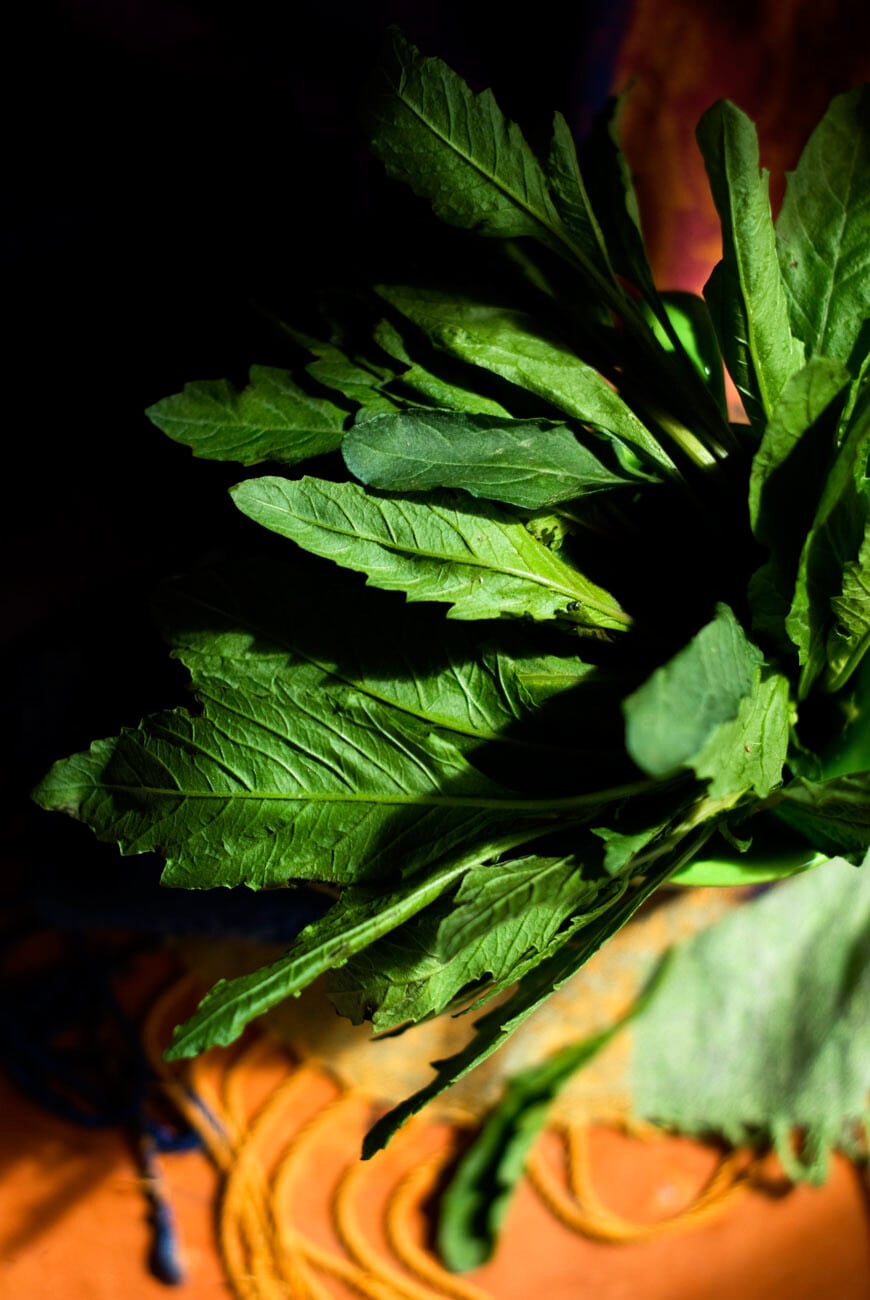
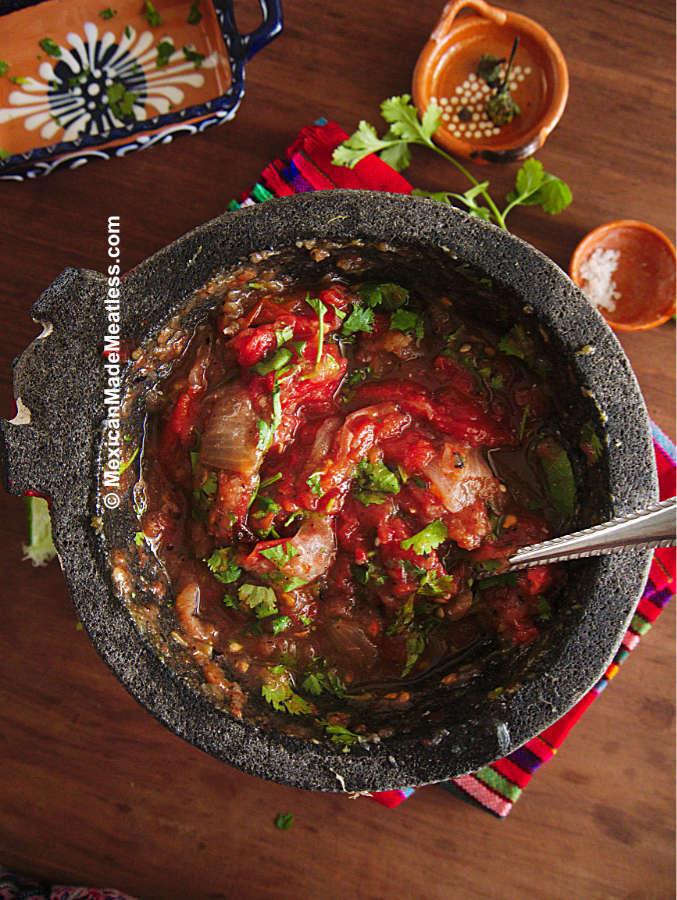
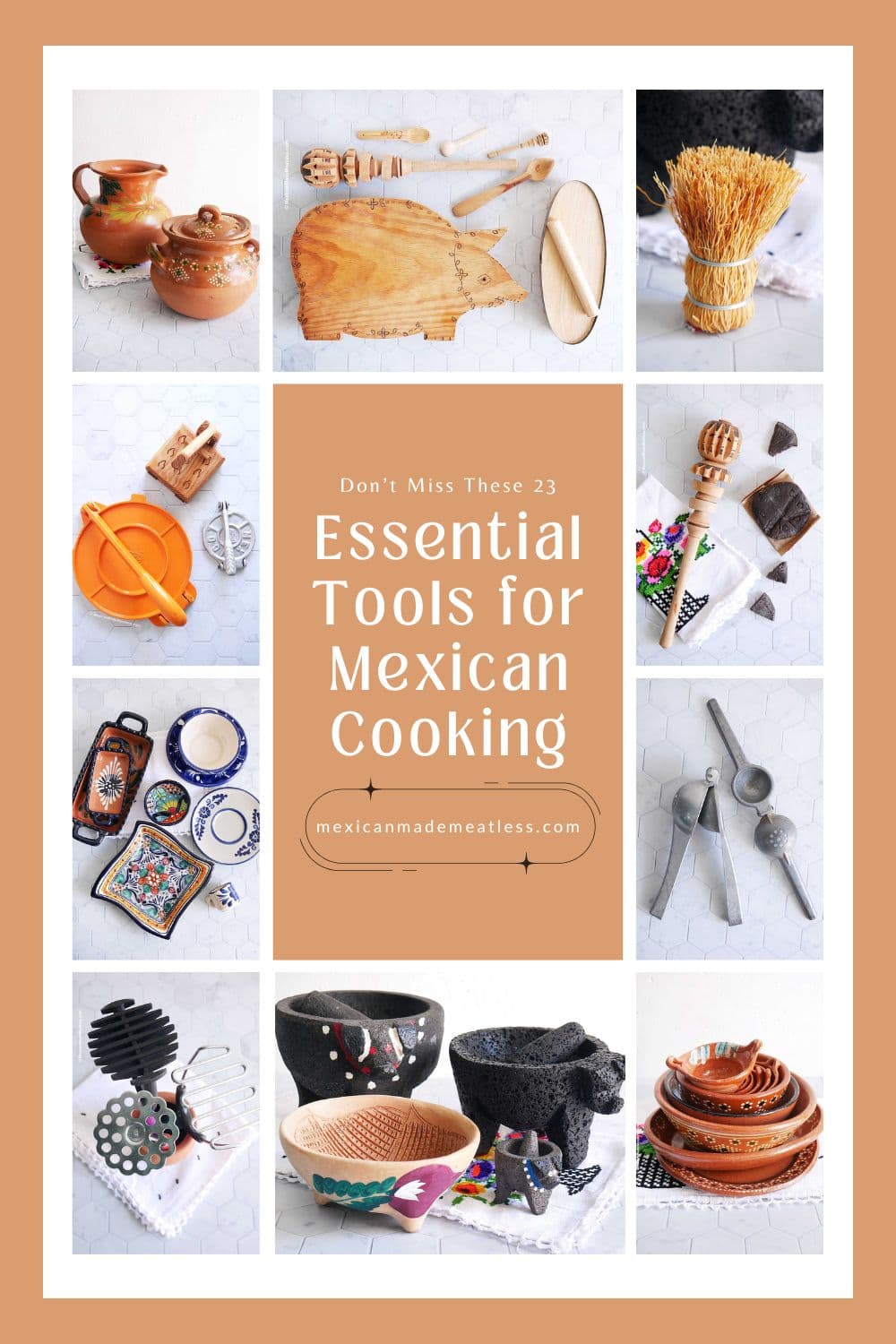
A beautiful tool! I’d love to own one…
Cheers,
Rosa
I don’t have a molcajete, but always think about getting one when I see them. I should just do it! And now I know how to cure it. Thanks!
I do own a molcajete and there is nothing better than creating salsa Nancy!
Your recipe looks delicious! Bookmarking it for a later date!
i spent a summer teaching in mexico and received one of these as a gift from the people i was staying with. i accepted it as beautiful and cultural but had no idea just how great it was in the kitchen! i’ve since learned to use it, both on traditional mexican dishes like salsa and guacamole but also for general grinding needs, from nutmeg to cocoa beans to lavender buds. it’s beautiful and so useful, i just love it!
I had a question about this type of mortar. Since it is more porous, is there any issue with garlic botulism? I’m afraid to use garlic in mine cause of how easy other stuff can get stuck in the little cracks inside the bowl.
Hi Mikeal,
I’ve never heard of that but of course it is always a good idea to be safe and prevent any contamination. To properly clean my mortar I use lots of running water and also a stiff brush to really get in all of the cracks to remove any food. Also if you feel there is too much food stuck in the little cracks (or pores), you can grind up some rock sea salt to help pull it out.
I hope this helps! 🙂
got it! thank you very much!
Garlic is a natural antimicrobial and therefore SHOULD absolutely be used to season your molcajete. You WANT it to get into the pores of the molcajete.
Also, in Mexico guacamole is never made in a molcajete. Salsas and moles yes, but guacamole…no. That’s an American thing.
Hi LovetoCook,
Thank you for your comment. I’m sorry but I have to disagree with you, in Mexico (by the way I am Mexican and live here too), we do make guacamole in a molcajete. This is a very old tool to the traditional Mexican cuisine that was used for many foods. Also some Mexican cooks say that this is the best or only tool for preparing guacamole. But just like anything, every family or cook’s personal preferences are different.
We’ll just agree to disagree. Thanks! 🙂
Would you recommend a good one? I’m blown away by the hundreds to choose from. Thanks
Hi LynnAnn,
Sorry, had to salvage your comment from the wrong folder. If you have a Hispanic or Asian food store near you, that’s a great place to look for a good and inexpensive mortar and pestle. If not online like on Amazon or MexGrocer they have really great ones to choose from.
I honestly didn’t know!.. thank you for sharing! I love your recipes!!.. o:)
Thank you so much, Albert! 🙂
Couple of comments about cast iron. A properly seasoned/conditioned piece of cast iron should be washed with soap if needed. It will not affect the conditioning. And a properly conditioned piece of cast iron does not absorb nor impart flavors. This is an old wives taale passed on over the generations to describe what builds up on a not-properly-cleaned piece of cookware. The word “seasoned” is incorrectly defined as flavor. Seasoning=conditioning. No flavors.
Should Separate molcajetes be used for sweets and savories?
That would be a good idea since the molcajete can absorb flavors and you may not want your cinnamon to taste like spicy salsa.